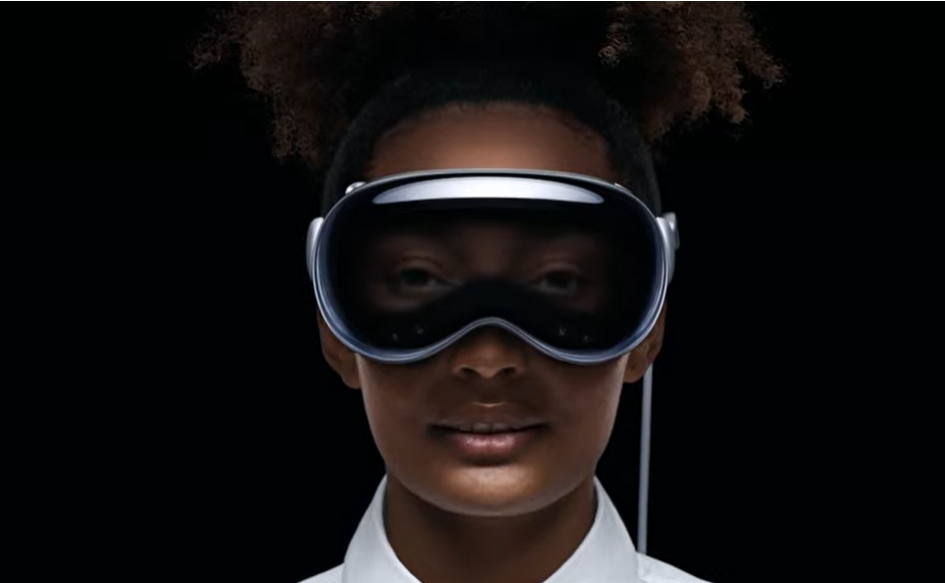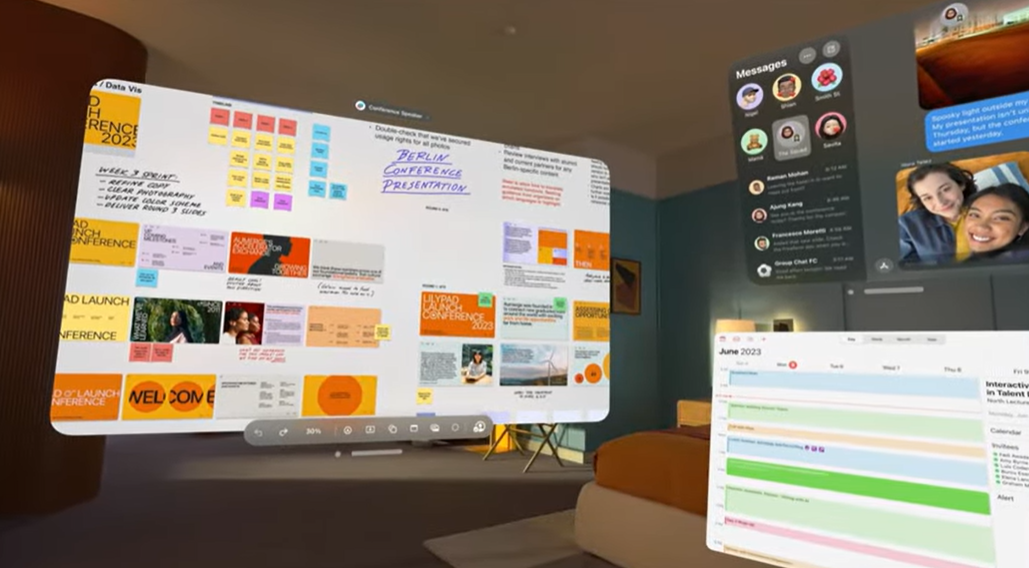Apple launches Vision Pro, a VR headset it hopes will be most important product since iPhone
Headset marks a shift towards ‘spatial computing’, says CEO Tim Cook
Your support helps us to tell the story
From reproductive rights to climate change to Big Tech, The Independent is on the ground when the story is developing. Whether it's investigating the financials of Elon Musk's pro-Trump PAC or producing our latest documentary, 'The A Word', which shines a light on the American women fighting for reproductive rights, we know how important it is to parse out the facts from the messaging.
At such a critical moment in US history, we need reporters on the ground. Your donation allows us to keep sending journalists to speak to both sides of the story.
The Independent is trusted by Americans across the entire political spectrum. And unlike many other quality news outlets, we choose not to lock Americans out of our reporting and analysis with paywalls. We believe quality journalism should be available to everyone, paid for by those who can afford it.
Your support makes all the difference.Apple has announced the ‘Vision Pro’, a headset it hopes will be its most important product since the iPhone.
The new virtual reality tool will allow people to see apps projected on top of the room around them, allowing apps to be “freed from the confines of a display”, Apple said.
The headset will cost $3,499, and be available from early next year in the US. That price is above the $3,000 that rumours had settled around – which had already drawn comments about how expensive it was.
Apple said the headset was the “most ambitious” product it has ever created. It combines glass on the front and inside, as well as an aluminium frame and a soft band that raps around the head.
:: Follow The Independent’s live coverage of Apple’s event here

The design includes a separate battery that goes in the pocket and attaches to the side of the headset, which can last for two hours. The headset can also plug into the wall for all-day use.
The central piece of the hardware is a display that Apple said is bright and detailed enough to show 4K video natively. It also includes “audio pods” that sit on the side of the headset and create spatial audio, which Apple said makes the brain con convinced that audio is coming from around the room.
On the inside is Apple’s M2 chip, which currently powers its laptops and iPad, as well as a specialised chip named R1 that is able to process data from 12 cameras, five sensors and six microphones. The speed of those chips means there is no latency, Apple said, which could in turn avoid common issues of motion sickness in virtual reality.
Mr Cook said that users will be able to “interact with digital content just like it’s in your physical space” and will no longer be “limited by the display”. The headset will allow people to control apps using the “most natural intuitive tools”, he said, with sensors that understand people’s eyes, voice and hands.
Users will be able to sit in their living room and see their apps – messages, phone calls, web browsing and more – projected on top of their coffee table, for instance. As such, it is the first Apple product “you look through, not at”, said Tim Cook as he introduced it during Apple’s Worldwide Developers Conference.
Other apps, such as games, will take over the full view, Apple said. But even then the goggles had been made to ensure that users were never cut off from the world around them.
That includes a feature that means that if someone comes into the room, the headset will spot them and superimpose them. But the headset also has a feature called “EyeSight” – a display on the outside of the goggles, which shows people’s eyes, and gives an indication of what they are doing inside the headset.
The software on the headset is based primarily around existing apps, rebuilt for the augmented reality features. Apple focused on the Photos app, for instance – showing how users can inhabit a panoramic photo, for instance, and use the camera inside the headset to capture 3D images.
All of those apps appear as virtual screens within the real environment. In almost all of Apple’s demonstrations, the apps were shown alongside real environments, rather than cutting people off from the real world.

Users of the headset can nonetheless change how that real environment appears. A dial on the headset allows them to decide how much of the real world shows, for instance, and it will also be lightly adapted to fit with what people are doing, such as changing the hue of the room’s colours to fit with a TV show.
The headset can also be used alongside existing Apple products. By looking at a Mac, for instance, its screen will appear as a virtual object, and users can also type on a Bluetooth keyboard and have those keys appear in the screen.
All of those experiences will be powered by a new operating system called VisionOS, Apple said, which is built on innovations from its existing software. That includes tools that allow for spatial audio and make existing apps available, it said.
Developers will be able to use existing frameworks from the iPhone, iPad and elsewhere within the headset, for instance. Many of those apps will be available as soon as the headset launches.
“It’s the start of an entirely new platform,” said Apple’s Mike Rockwell, who led the creation of the headset, introducing a new App Store that will focus on spatial apps. Some developers have already started making those apps: including one that overlays biological models on top of the real world for students, for instance.
The software is built around a “digital persona”, that is created by using the headset itself to scan a user’s face. That will then create a detailed 3D model of the wearer, which will then show in FaceTime conversations and elsewhere.
Apple has also built privacy and security features into the headset. That includes a new tool called “OpticID” that scans users’ eyes to identify who they are and unlock the headset, and a system that means apps and websites will not be able to see where someone is looking when they are scrolling around.

Join our commenting forum
Join thought-provoking conversations, follow other Independent readers and see their replies
Comments